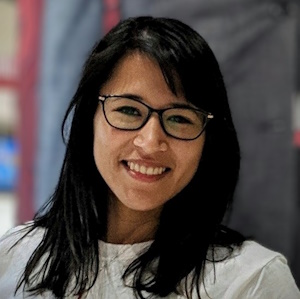New tool reveals how DNA nanostructures interact with cell membranes

Gaby Clark
scientific editor

Robert Egan
associate editor

Lipid membranes, which form the outer layer of cells, can be engineered to influence cellular functions. For example, adjusting the permeability of the membrane can improve drug delivery. Adding signaling molecules to the membrane surface can also help direct drugs to specific tissues, increasing treatment precision.
DNA nanostructures are emerging as useful tools for this purpose. By attaching hydrophobic groups like cholesterol, which anchor them into the lipid membrane's hydrophobic core, scientists have been able to alter the membrane's properties, such as increasing its strength or changing its shape.
Researchers from Institute of Science Tokyo (Science Tokyo), Japan, have made a significant advance in characterizing DNA–lipid interactions using quartz crystal microbalance with energy dissipation monitoring (QCM-D). This technique measures changes in the mass and viscoelastic properties of molecules adsorbed on surfaces.
The study was led by Associate Professor Tomohiro Hayashi, doctoral student Zugui Peng, and Professor Tohru Yagi from the Department of Materials Science and Engineering, School of Materials and Chemical Technology, and the Department of Mechanical Engineering, School of Engineering at Science Tokyo.
in the journal Nanoscale on 15 April 2025, it offers a novel approach to monitoring how DNA nanostructures attach and interact with lipid membranes. It also reveals mechanical changes, such as variations in stiffness or fluidity, in both the membrane and the DNA layer. These insights are difficult to obtain through conventional optical methods alone.
"This study is the first to apply QCM-D in exploring how DNA nanostructures interact with lipid bilayers. By revealing insights beyond the reach of optical methods, QCM-D proves to be a powerful technique for analyzing various DNA nanostructures," says Dr. Hayashi.
The researchers studied the incorporation of six-helix bundle DNA nanopores (DNPs) with one cholesterol and (DNP-1C) three cholesterol tags (DNP-3C) into supported lipid bilayers (SLBs). To model low-curvature membranes similar to those found in giant unilamellar vesicles (GUVs), they used lipid bilayers supported on silicon oxide (SiO2) and a polyethylene glycol (PEG)-coated surface.
Upon introducing the DNPs to the substrate, the researchers observed that both DNP-1C and DNP-3C rapidly attached to the membrane within seconds, but their long-term behaviors differed significantly. DNP-1C formed a soft, stable layer on the membrane surface that remained unchanged over time, while DNP-3C gradually aggregated into a denser, more rigid structure as its surface concentration increased. This aggregation was accompanied by slow, sustained integration into the lipid bilayer.
By measuring the viscosity of the adsorbed layers, the team found that DNP-3C continues to integrate into lipid bilayers for over 10 hours. The researchers propose that the uninserted cholesterol anchors of the tethered DNPs may interact with freely floating DNPs, leading to increased clustering and sustained integration into the lipid layer.
They also found that the supporting substrate strongly influenced interaction dynamics. PEG-supported SLBs facilitated faster incorporation of DNP-3C compared to SLBs on bare SiO2, where the negatively charged surface and closer proximity to the membrane inhibited DNP integration.
These findings have important implications for the design and application of DNA nanostructures. "Our study is crucial for understanding membrane-interacting DNA nanostructures. We believe it will accelerate DNA nanotechnology research, leading to the development of more effective membrane-interacting structures," Dr. Hayashi noted.
With QCM-D providing new insights, scientists are now one step closer to designing DNA nanostructures for groundbreaking biomedical applications such as artificial cells and molecular sensors.
More information: Zugui Peng et al, Unraveling the time course of interaction between DNA nanopores and lipid bilayers using QCM-D: role of cholesterol anchors and bilayer supporting substrates, Nanoscale (2025).
Journal information: Nanoscale
Provided by Institute of Science Tokyo





















